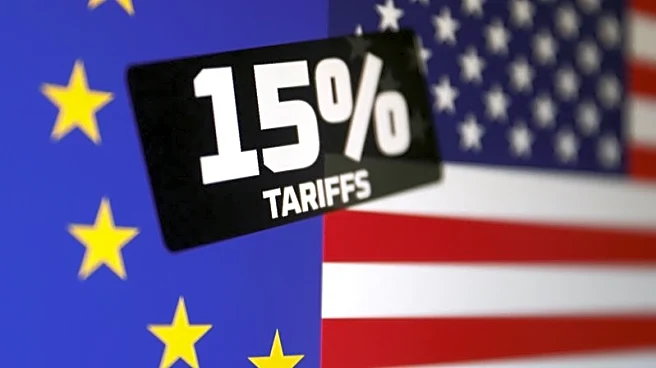What's Happening?
The United States and the European Union have formalized the terms of a framework trade agreement, which includes a 15% tariff on EU imports by the U.S. The agreement, announced in a joint statement, outlines tariff reductions and preferential market access for U.S. products. The U.S. will apply tariffs on pharmaceuticals, semiconductors, and lumber, while the EU plans to eliminate tariffs on U.S. industrial products and provide market access for various food exports. The agreement aims to enhance transatlantic trade relations and reduce regulatory burdens on U.S. companies.
Why It's Important?
The trade agreement between the U.S. and EU represents a significant step in strengthening economic ties and promoting trade cooperation. By reducing tariffs and providing market access, the agreement can boost trade volumes and benefit industries such as pharmaceuticals, semiconductors, and agriculture. The collaboration on automobile standards and potential cooperation on steel and aluminum imports further underscores the commitment to addressing trade challenges. The agreement's impact on economic growth and job creation highlights its importance for both regions.
What's Next?
The U.S. and EU will continue to implement the terms of the trade agreement, with tariff reductions expected to take effect soon. Stakeholders, including businesses and policymakers, will monitor the impact of the agreement on trade volumes and industry dynamics. The ongoing cooperation between the two regions may lead to further negotiations and agreements, enhancing transatlantic trade relations.












